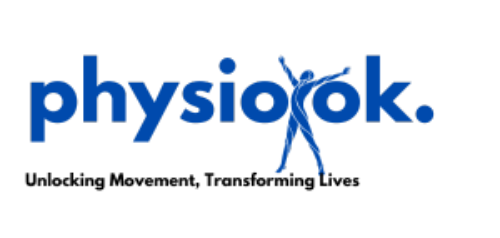Gait training is a specialized form of physiotherapy designed to help individuals improve their ability to walk. Whether due to injury, illness, surgery, or a congenital condition, gait training can restore mobility, improve posture, and reduce the risk of future injuries. It’s an essential aspect of rehabilitation for people of all ages, targeting balance, coordination, and muscle strength.
What is Gait Training?
Gait training focuses on retraining the body to walk properly. It involves a combination of exercises, stretches, and techniques to correct walking patterns and improve movement efficiency. Physiotherapists assess the patient’s current gait, identify abnormalities, and create a personalized plan to address specific challenges.
Who Needs Gait Training?
Gait training is beneficial for individuals experiencing:
- Neurological Conditions: Such as stroke, multiple sclerosis (MS), or Parkinson’s disease.
- Orthopedic Issues: Including fractures, hip or knee replacements, and arthritis.
- Post-Surgery Rehabilitation: For recovery after procedures affecting mobility.
- Injuries: Such as ligament tears, sprains, or trauma to the legs, feet, or spine.
- Congenital Conditions: Including cerebral palsy or spina bifida.
- Age-Related Challenges: Such as balance issues or fall prevention in elderly patients.
Key Components of Gait Training
-
Assessment and Analysis:
- Physiotherapists use tools like video analysis, force plates, or motion sensors to study walking patterns and identify deviations.
-
Strengthening Exercises:
- Exercises target muscles critical for walking, such as the quadriceps, hamstrings, glutes, and calves.
-
Balance and Coordination Training:
- Activities like standing on one leg, walking on uneven surfaces, or using a balance board improve stability.
-
Mobility and Stretching:
- Stretching tight muscles and mobilizing stiff joints ensure smoother and more natural movement.
-
Use of Assistive Devices:
- Devices like walkers, canes, or orthotics may be incorporated to aid walking while ensuring proper posture.
-
Neuromuscular Re-education:
- Techniques to retrain the brain and muscles to work together effectively, especially after neurological injuries.
-
Posture and Alignment:
- Correcting posture ensures efficient movement, reduces pain, and prevents further injuries.
Benefits of Gait Training
-
Restored Mobility:
- Helps individuals regain their ability to walk independently or with minimal assistance.
-
Improved Balance and Stability:
- Reduces the risk of falls, especially in elderly or post-stroke patients.
-
Enhanced Muscle Strength:
- Strengthens the muscles needed for walking, improving endurance and performance.
-
Pain Reduction:
- Correcting gait abnormalities relieves stress on joints and muscles, reducing pain.
-
Better Posture and Alignment:
- Promotes healthy movement patterns, preventing long-term complications.
-
Increased Confidence:
- Regaining mobility boosts self-esteem and independence, improving overall quality of life.
-
Prevention of Secondary Issues:
- Reduces the likelihood of complications like joint degeneration, muscle atrophy, or back pain due to poor walking mechanics.
Techniques and Tools in Gait Training
-
Treadmill Training:
- Provides a controlled environment for practicing walking and improving endurance.
-
Parallel Bars:
- Offer stability for patients learning to walk again.
-
Functional Electrical Stimulation (FES):
- Stimulates specific muscles to activate and retrain movement patterns.
-
Gait Trainers or Exoskeletons:
- Advanced tools used for patients with severe mobility impairments, like spinal cord injuries.
-
Aquatic Therapy:
- Water reduces the impact on joints, making it easier to practice walking with less pain.
-
Dynamic Bracing:
- Customized braces support weak joints and encourage proper alignment.
Home Exercises to Support Gait Training
Patients are often given at-home exercises to complement their therapy sessions, such as:
- Heel-to-Toe Walking: Helps improve balance and coordination.
- Step-Ups: Strengthens the legs and improves stair-climbing ability.
- Ankle Rolls and Calf Raises: Enhance flexibility and strength in the lower legs.
- Marching in Place: Improves hip mobility and stability.
The Role of the Physiotherapist
A physiotherapist tailors gait training to each patient's unique needs, ensuring:
- Regular progress monitoring and adjustments to the plan.
- Educating patients on proper techniques to avoid injuries.
- Providing psychological support and motivation throughout the recovery process.
Conclusion
Gait training is a cornerstone of physiotherapy that goes beyond improving the ability to walk. It empowers individuals to regain their independence, enhances overall mobility, and prevents future complications. Whether recovering from surgery, managing a neurological condition, or addressing balance issues, gait training offers a pathway to improved physical and emotional well-being.
